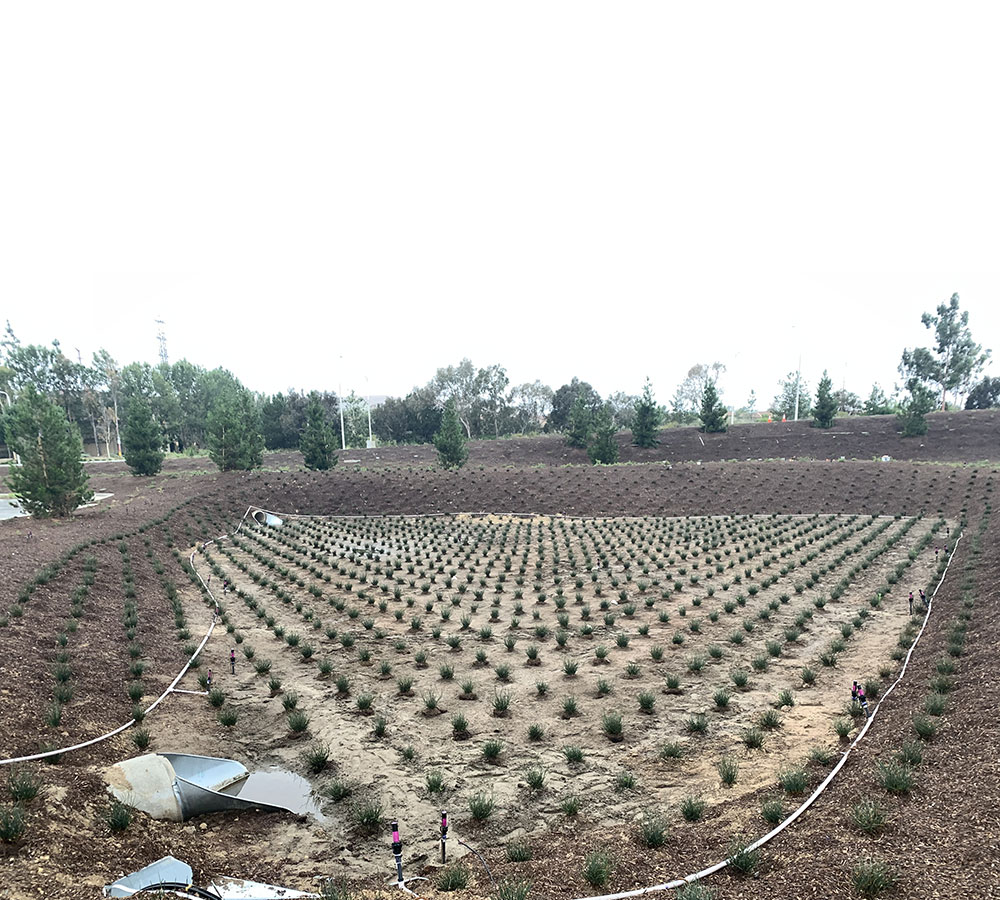Stormwater Maintenance Services
California’s Water Basins
Conserving and Preserving Freshwater Resources Through Stormwater Management
California is known to many as a manufacturing and agriculture powerhouse. The state reportedly uses one billion gallons of water daily, yet relies heavily on external freshwater sources. Thus, the state doesn’t receive nearly enough water to sustain its operations and population of nearly 40 million people.
Since the 1930s, California’s high water demand has depended on the Colorado River for its primary water source, causing several watersheds to be redirected throughout the state to provide to populated areas and farmland. California’s climate receives very little rain throughout the year. As a result of such scarcity, the conservation of our waterways is one of the most important resources to address. The health of our vast population depends on it, the prosperity of our massive economy depends on it, and most importantly, the overall health of our ocean is in direct correlation with it.
The vast rolling hills and terrain of Southern California create what we call, “watersheds”; areas that allow for water from urban runoff and rain to flow to and from bodies of water. As this water enters these watersheds, it is eventually collected into large areas known as drainage basins. These drainage basins are truly a remarkable resource. They are able to act as natural sponges and absorb absurd amounts natural chemicals, automotive fluids, oils, and grease when working properly, and can even capture landscape debris, trash, and additional sediment. Additionally, drainage basins are responsible for naturally purifying our water. Plants are able to readily absorb the pollutants, thereby naturally replenishing the groundwater supply! These drainage basins are also one of the best approaches in preventing soil erosion and flooding. As the basin acts to absorb the stormwater pollutants, water flow rate slows tremendously and greatly facilitates in keeping the topsoil intact.
With the increase in global population, comes urban growth. Significant development alters the natural drainage processes affecting timing of infiltration and increased peak flows.
This expansion could pose significant threats to the natural processes and degrade the watershed dynamics if sustainable planning isn’t incorporated at development. Thankfully, with the adoption and Low Impact Development (LID) planning policies, developers are able to manage stormwater runoff.
Incorporating site design BMPs such as bioretention systems, detention basins and other aqueous environments help “slow the flow.” Managing runoff helps counteract the affects caused by urbanization allowing for restoration of the altered watershed processes within the built area.
Sounds like basins are a big deal, right? Unfortunately, once development has commenced and turned over, many decision makers most often overlook on-going maintenance. In some cases – these installed environmental systems aren’t even given any acknowledgment post development. When left unmanaged these aquatic buffers become overrun with invasive species and cause other vector and
ecological concerns.
The result: all pollutants such as oil, grease, and hazardous chemicals that were supposed to be absorbed and all the planning that went into the site design to maintain the quality of water before urbanization head straight to the Pacific Ocean -we wont even get into flood control. All that remain in these basins are mounds of trash and heavy grease/ oils that get caught in overgrown vegetation, resulting in an ugly (and incredibly smelly) site.
Truth is, preventative service can save significant corrective maintenance costs. Allocating just a small portion of your budget to maintaining these areas is far cheaper than paying hefty fines from the State Water Board. Try to run from such a responsibility, and you will find yourself spiraling the drain (pun intended).
Pollutant quantities are magnified downstream, and point sources can easily be tracked back to your property if you are not abiding by the city/ state regulations. Therefore, you can be legally at fault for severe environmental damage.
There is a need for property owners to understand that the overall success to which extent these installed systems function as designed, rely heavily on the stormwater program implemented. Furthermore, property owners need to acknowledge that the majority of our basins are not being managed with a viewpoint for a future; its time to take action before it is too late. Don’t wait for that “City Maintenance Verification” request form to implement preventative maintenance.
Heavy regulations set by the Clean Water Act (CWA), established under the National Pollutant Discharge Elimination System (NPDES), requires that not just anyone can restore a basin back to its normal function. Drainage basins need the careful analysis from a water quality expert. When the water quality basin fails, restoration should be thoroughly documented. This would include elevation check, correct placement of aggregate, and assessment of media composition and proper soils compaction to
name a few. If the rehabilitation requires a revised site design and hydrology is altered, the WQMP will be required to be submitted for approval by the City planning department as well as a certified Environmental Engineer prior to alteration.
Working with an inexperienced individual is compared to working with an unlicensed contractor. A water quality expert will help you stay compliant with the proper regulatory compliance while also expressing familiarity with the different processes and procedures required with each site’s unique attributes. By partnering with these specialists, you are avoiding being blindsided by any additional fines.
Ultimately, it takes personal responsibility and proper practices in order to reduce trash, debris, food, oils, and greases from ever entering our waterways. The proper maintenance of stormwater systems and continual education of others on the ecological importance of looking after our waterways is the best preventative effort in ensuring the health of our canyons, creeks and beautiful coastlines.
Geo4 Services is proud to offer basin restoration services. Our programs are designed to enhance proper conservation techniques while establishing preventative service programs that save you money in the long run. Most importantly, we strive to bring back the importance of environmental stewardship for property owners while ensuring the sustainability of water resources for generations to come.



